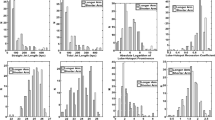Recent studies have shown that among the population of radio-loud active galactic nuclei in the local U-niverse, they numerically dominate compact radio sources of the FR0 class. In this paper, we present ob-servation results of a sample of 33 FR0 radio galaxies with RATAN-600 in the first half of 2020. For the first time, quasi-simultaneous spectra of this class objects have been measured in the frequency range as wide as 2.25–22.3 GHz. Radio luminosity of the sampled objects at the frequency 4.7 GHz varies within \({{10}^{{38.8 - 40.6}}}\) erg/s, with the average value of \({{10}^{{39.7}}}\) erg/s. The data confirm the deficit of extended radio emission: the average value of the core-dominance parameter (\(\log R \approx - 0.10\)) substantially exceeds the values typical for FRI galaxies. Quasi-simultaneous spectra are flat, while in the range 4.7–8.2 GHz, the average spectral index is close to zero. The spectra of 44 percent of objects which have more than three quasi-simultaneous points have peaked-shaped profiles. Using additional data of catalogs allowed us to identify three new candidates for the sources with the maximum of the spectrum in the GHz range. A statistically significant correlation was found between the parsec scale jet power and the bolometric luminosity of the accretion disk: \(\log\tfrac{{{{L}_{j}}}}{{{{L}_{{{\text{Edd}}}}}}} = (0.52 \pm 0.15)\log\tfrac{{{{L}_{{{\text{bol}}}}}}}{{{{L}_{{{\text{Edd}}}}}}} - (0.69 \pm 0.51)\). In general, the spectra of the studied objects are flat and have a complex structure, which indicates a high opacity in the radio range and the contribution of several components to the total spectrum.






Similar content being viewed by others
REFERENCES
G. Ghisellini, AIP Conf. Proc. 1381, 180 (2011).
E. M. Sadler, R. D. Ekers, E. K. Mahony, T. Mauch, and T. Murphy, Mon. Not. R. Astron. Soc. 438, 796 (2014).
R. D. Baldi, A. Capetti, and G. Giovannini, Astron. Astrophys. 576, A38 (2015).
R. D. Baldi, A. Capetti, and G. Giovannini, Astron. Nachr. 337, 114 (2016).
R. D. Baldi, A. Capetti, and F. Massaro, Astron. Astrophys. 609, A1 (2018).
X.-P. Cheng and T. An, Astrophys. J. 863, 155 (2018).
R. D. Baldi, A. Capetti, and G. Giovannini, Mon. Not. R. Astron. Soc. 482, 2294 (2019).
A. Capetti, F. Massaro, and R. D. Baldi, Astron. Astrophys. 633, A161 (2020).
E. Torresi, P. Grandi, A. Capetti, R. D. Baldi, and G. Giovannini, Mon. Not. R. Astron. Soc. 476, 5535 (2018).
J. J. Condon, W. D. Cotton, E. W. Greisen, Q. F. Yin, R. A. Perley, G. B. Taylor, and J. J. Broderick, Astron. J. 115, 1693 (1998).
Yu. N. Parijskij, IEEE Antennas Propag. Mag. 35, 7 (1993).
M. Mingaliev, Yu. Sotnikova, T. Mufakharov, E. Nieppola, et al., Astron. Nachr. 338, 700 (2017).
O. V. Verkhodanov, S. A. Trushkin, and V. N. Chernenkov, Baltic Astronomy 6, 275 (1997).
O. V. Verkhodanov, S. A. Trushkin, H. Andernach, and V. N. Chernenkov, Bull. SAO 58, 118 (2005).
R. Yu. Udovitskii, Yu. V. Sotnikova, M. G. Mingaliev, P. G. Tsybulev, G. V. Zhekanis, and N. A. Nizhelskii, Astrophys. Bull. 71, 496 (2016).
O. V. Verkhodanov, ASP Conf. Ser. 125, 46 (1997).
E. M. Sadler, R. Ricci, R. D. Ekers, J. A. Ekers, et al., Mon. Not. R. Astron. Soc. 371, 898 (2006).
M. Tucci, J. A. Rubino-Martin, R. Rebolo, R. Genova-Santos, et al., Mon. Not. R. Astron. Soc. 386, 1729 (2008).
K. I. Kellermann, I. I. K. Pauliny-Toth, and P. J. S. Williams, Astrophys. J. 157, 1 (1969).
O. V. Verkhodanov, D. D. Kozlova, and Yu. V. Sotnikova, Astrophys. Bull. 73, 393 (2018).
Y. A. Kovalev, Y. Y. Kovalev, and N. A. Nizhelsky, Publ. Astron. Soc. Jpn. 52, 1027 (2000).
C. P. O’Dea, S. A. Baum, and C. Stanghellini, Astrophys. J. 380, 66 (1991).
A. Capetti, R. D. Baldi, M. Brienza, R. Morganti, and G. Giovannini, Astron. Astrophys. 631, A176 (2019).
D. Garofalo and C. B. Singh, Astrophys. J. 871, 259 (2019).
Yu. V. Sotnikova, T. V. Mufakharov, E. K. Maiorova, M. G. Mingaliev, R. Yu. Udovitskii, N. N. Bursov, and T. A. Semenova, Astrophys. Bull. 74, 348 (2019).
A. Merloni, S. Heinz, and T. di Matteo, Mon. Not. R. Astron. Soc. 345, 1057 (2003).
R. A. Daly, Astrophys. J. 863, 117 (2018).
D. Dicken, C. Tadhunter, R. Morganti, D. Axon, et al., Astrophys. J. 788, 98 (2014).
S. W. Allen, R. J. H. Dunn, A. C. Fabian, G. B. Taylor, and C. S. Reynolds, Mon. Not. R. Astron. Soc. 372, 21 (2006).
D. A. Rafferty, B. R. McNamara, P. E. J. Nulsen, and M. W. Wise, Astrophys. J. 652, 216 (2006).
L. Birzan, B. R. McNamara, P. E. J. Nulsen, C. L. Carilli, and M. W. Wise, Astrophys. J. 686, 859 (2008).
A. Merloni and S. Heinz, Mon. Not. R. Astron. Soc. 381, 589 (2007).
R. D. Baldi, E. Torresi, G. Migliori, and B. Balmaverde, Galaxies 7, 76 (2019).
P. Grandi, A. Capetti, and R. D. Baldi, Mon. Not. R. Astron. Soc. 457, 2 (2016).
F. Tavecchio, C. Righi, A. Capetti, P. Grandi, and G. Ghisellini, Mon. Not. R. Astron. Soc. 475, 5529 (2018).
Funding
Observations with SAO RAS telescopes are supported by the Ministry of Science and Higher Education of the Russian Federation. This work is supported in the framework of the State project “Science” by the Ministry of Science and Higher Education of the Russian Federation under the contract 075-15-2020-778.
Author information
Authors and Affiliations
Corresponding authors
Additional information
Translated by L. Yungelson
Rights and permissions
About this article
Cite this article
Mikhailov, A.G., Sotnikova, Y.V. Radio Properties of FR0 Galaxies According to Multifrequency Measurements with RATAN-600. Astron. Rep. 65, 233–245 (2021). https://doi.org/10.1134/S1063772921040028
Received:
Revised:
Accepted:
Published:
Issue Date:
DOI: https://doi.org/10.1134/S1063772921040028




